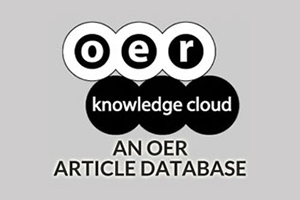Stories from Students in Their First Semester of Distance Learning
DOI:
https://doi.org/10.19173/irrodl.v16i4.1647Keywords:
distance learning, open learning, higher education, e-learning, online learning, reflective diaries, student voice, student experienceAbstract
Online and distance learning is becoming increasingly common. Some would say it has quickly become the preferred or 'new normal' mode of study throughout the world. However, surprisingly little is known about what actually happens to first year distance students once they have enrolled in tertiary institutions; what motivates them and how they actually experience the transition to formal study by distance. This gap in the literature presents a challenge for distance education providers who worldwide are coming under increasing scrutiny in light of poor retention, progression and completion rates. Against this backdrop, the purpose of the current study was to gather insights and seek a deeper understanding from first-time distance learners about the nature of their experiences. The study was framed around Design-based Research involving a mixed method approach over three phases. This paper focuses on the third phase, which was the major component of the study. The lived experiences of 20 first-time distance learners were gathered, in their own words, using weekly video diaries for data collection. Over 22 hours of video data was transcribed and thematically analysed, from which five themes have been reported. The discussion reflects on the ways that video diaries have provided a unique insight around the complexities of distance learning — as distinct from campus-based learning. The paper concludes that the new digital learning environment made possible by the Internet offers a number of exciting possibilities for distance learners; however, more needs to be done by institutions to change the ‘lone wolf’ preconception of distance education and to avoid the ‘goulash approach’ to supporting distance learners. The lives of first-time distance learners are not black and white; they are complex shades of grey and this needs to be taken in to account when designing appropriate learning experiences and supports to ensure student success.
Published
How to Cite
Issue
Section
License
This work is licensed under a Creative Commons Attribution 4.0 International License. The copyright for all content published in IRRODL remains with the authors.
This copyright agreement and usage license ensure that the article is distributed as widely as possible and can be included in any scientific or scholarly archive.
You are free to
- Share — copy and redistribute the material in any medium or format
- Adapt — remix, transform, and build upon the material for any purpose, even commercially.
The licensor cannot revoke these freedoms as long as you follow the license terms below:
- Attribution — You must give appropriate credit, provide a link to the license, and indicate if changes were made. You may do so in any reasonable manner, but not in any way that suggests the licensor endorses you or your use.
- No additional restrictions — You may not apply legal terms or technological measures that legally restrict others from doing anything the license permits.







